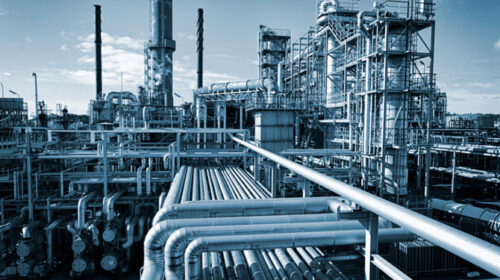The longer the prices for natural gas remain at record high levels in Europe this year, the stronger the markets feel that Russian gas should not be seen as a quick fix to the problem, at least not before this winter ends.
“Overall gas production in Russia over the three quarters of 2021 was 12 percent and 2.6 percent higher than a year ago and in 2019. But it was not adequate to raise the supply to the EU immediately,” analysts at Bloomberg NEF said in a note dated Oct. 12.
The fundamentals have changed now. Ronald Smith, executive director and senior oil and gas analyst at Moscow-based BCS Global Markets, explained to Arab News in an emailed message: “In 2021, domestic demand in Russia has gone up substantially on a year-on-year basis. This is at least partially due to the weather, as 2020 was perhaps the warmest year on record, and 2021 has been pretty close to the 10-year norm.”
“There was a strong request to refill domestic storage in Russia before the heating season starts on Nov.1,” Smith added.
Given the pandemic circumstances, Putin’s administration didn’t want to take any chances. As a result, Russia turned up among “bottom 5″ gas exporters whose shipments abroad in the third quarter of 2021 fell the most in absolute terms from the same quarter of 2019, according to a presentation by US-based Cheniere Energy, Inc. at an EIA event on Nov. 16.
Gazprom is also facing capacity constraints. “The company is currently producing 1.5 billion cubic meters per day. That is effectively 100 percent of the capacity. They might be able to manage 1.55 bcm/d, but not for very long, and that needs to be reserved for when the weather actually gets cold, say, -20C in Moscow and -5C in Frankfurt,” Smith told Arab News.
Responding to Arab News question how big the size of the increase in Gazprom shipments to Europe could have been over the next 3 months, had Nord Stream 2 regulatory issues been resolved, the analyst said: “Not much at this point unless Gazprom is willing to take gas out of Russian storage, which is full at this time.”
There seems to be a consensus view among industry experts that high gas prices in Europe this year is a result of a confluence of multiple things such as abnormal weather, a drop in European production, competition with Asia over the limited supply of LNG and the “green push.”
Spot prices for natural gas in Europe rose 41 percent during November. On Nov. 30, the front-month Dutch TTF Gas Futures, a European price benchmark, with delivery during January 2022, closed down 1 percent from the previous day at €92.5 after it jumped by more than 5 percent in early morning trading, according to data on Intercontinental Exchange, Inc. website.





